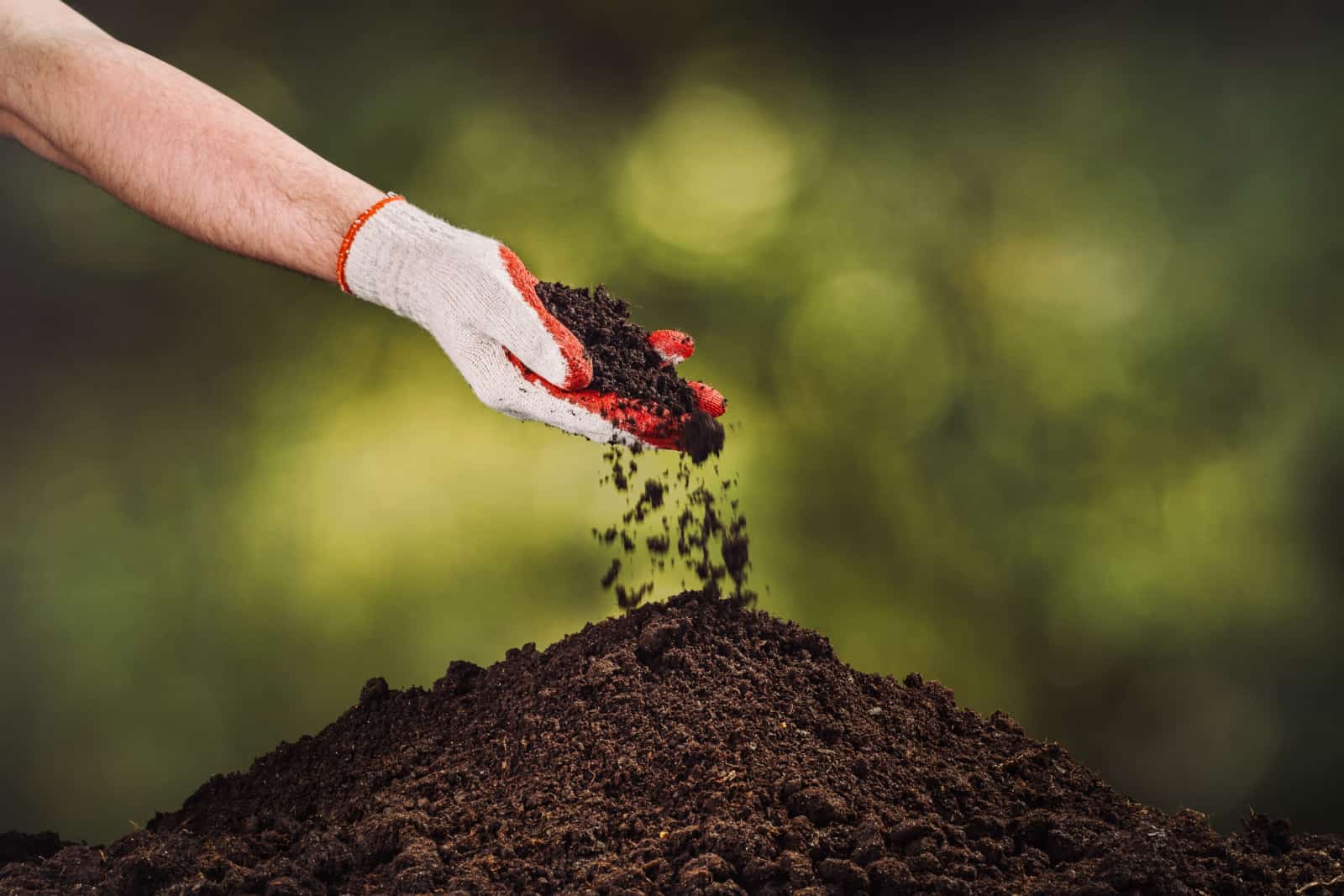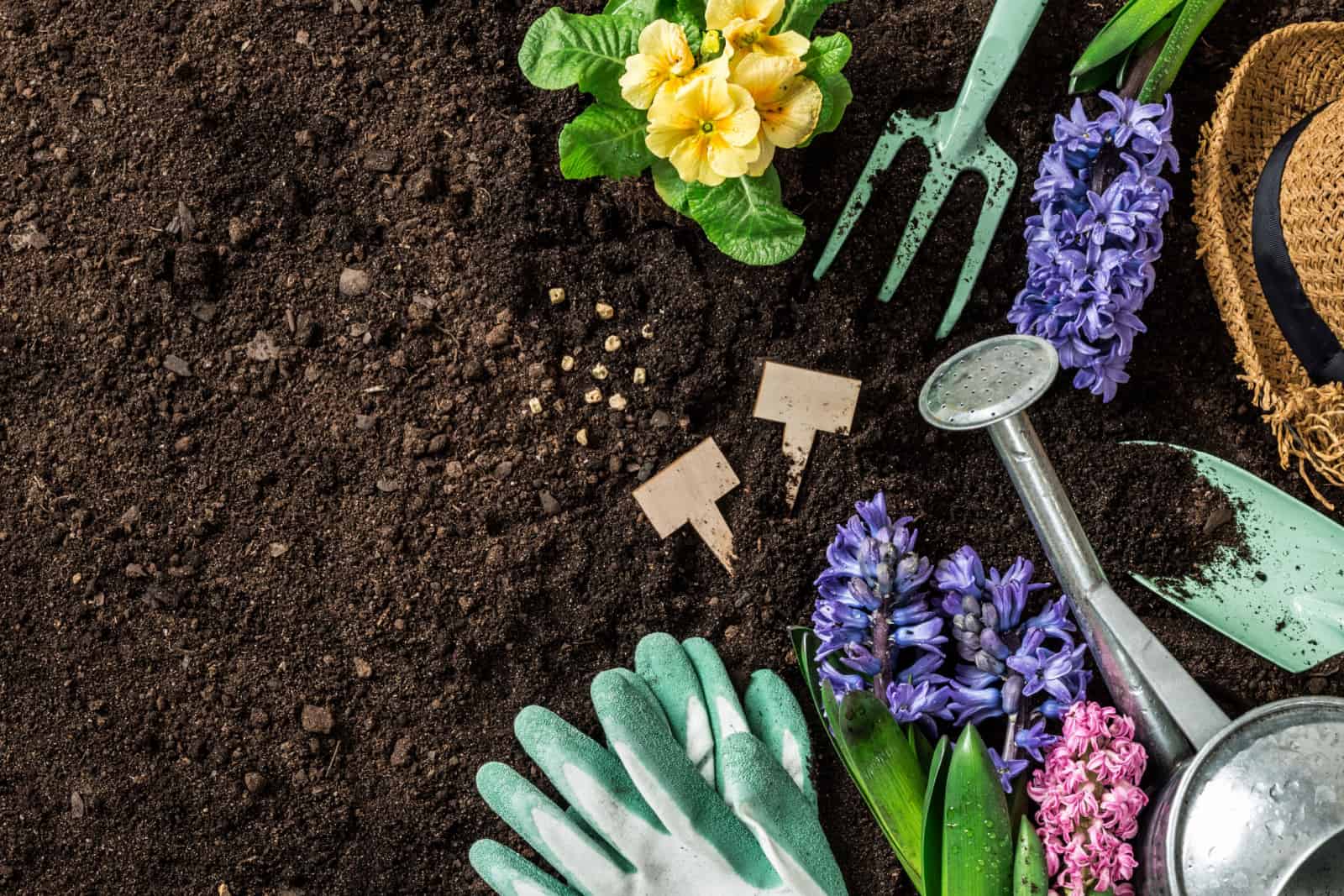Every gardener’s dream is to have a plot filled with nightcrawlers and red wigglers because these beneficial worms improve soil texture and fertility.
But not all worms have good intentions! Asian jumping worms have slowly found their way into North America, first in the Midwest and Northeast, but now as far south and west as Florida and Oregon.
They damage the topsoil instead of improving it and create an environment in which your plants cannot thrive.
Let’s take a closer look at these pests!
What Are Jumping Worms?
Jumping worms may look like earthworms to the inexperienced eye due to their brownish color, but they are a type of bad worm in garden soil you want to avoid.
There are three species you should be aware of: Metaphire hilgendorfi, Amynthas agrestis, and Amynthas tokioensis.
You may have heard of them referred to as snake or crazy worms, and for good reason. Once you disturb them, they turn hectic and start slithering their bodies like snakes instead of slowly moving forward like a regular earthworm.
This movement is one of the easiest ways to recognize whether you’re dealing with jumping worms. Here’s a video that will help you spot them:
They’re also gray-brown with inconspicuous green hues, becoming iridescent when exposed to sunshine. Regular earthworms, on the other hand, are more red or pink.
Finally, the clitellum – a saddle-like band wrapped around the worm’s body – also differs. In earthworms, it is almost the same color as the body itself and slightly raised.
Jumping worms have a much smoother clitellum that’s nearly at the same level of the body and much paler than the rest, almost white.
Why Are They Threatening?
Just like many other worms, jumping worms feed on plant debris, decompose it, and turn it into castings.
Their excrement is rich in nutrients, but since these worms don’t burrow deeper than 4 inches into the soil, the plants’ roots won’t be able to reach the nutrients and the first rain will wash them off.
Therefore, jumping worms lessen the soil quality, make it unsuitable for many plant species, and can even make it difficult for plants to root. (1)
This is because they tunnel just below the ground and create loose soil, preventing the plants from rooting properly. They even consume the plant roots, creating more issues for overall flora. (2)
Jumping worms won’t aerate the soil properly or help with moisture infiltration because they live so close to the surface.
Another reason jumping worms are so threatening is that they can outcompete other more beneficial species and spread rapidly over your garden.
Mature worms shed cocoons containing eggs that survive harsh winters and hatch in spring, taking only about 2 months to become reproductive adults. They start reproducing immediately and create at least 2 generations until the first frost kills them. (3)
Therefore, they don’t harm your plants directly but their actions result in conditions they struggle to exist under.
Quick Test To Check For Them
The best way to tell if you have a jumping worm infestation in your yard is seeing and identifying these nuisances.
However, you don’t have to wait for a chance meeting; you can make them come to you.
Mix a third of a cup of hot yellow mustard with a gallon of water and pour half of it over a square foot area you wish to examine. Wait a couple of minutes and then add the rest of the mixture.
This solution will make the worms come to the surface, making them so much easier to spot and identify. Also, mustard is toxic neither to the worms or plants; it’ll just irritate the critters and make them come out of the ground.
What To Do If You Have A Jumping-Worm Infestation
Believe it or not, jumping worms can take an emotional toll on a gardener’s life and not just affect their landscape.
There’s even a study which reported various negative feelings about these critters, including dreaming about them, sadness, fear or panic, anger, etc. (4)
This study led to the creation of emotional support guidelines for people with jumping worms.
Part of the emotional turmoil comes from the fact that these worms are difficult to eradicate. There is no chemical control aimed specifically at destroying these pests, but you can still manage them and grow beautiful plants.
Report It
The first thing you should do if you notice jumping worms in your garden is report them. Inform the local and state authorities, naturalist communities, and invasive species sites such as iNaturalist and EDDMaps.
Talk to your neighbors, friends, and family to spread awareness about these worms. They can then monitor their yards and deal with infestations sooner.
Get Rid Of Them By Hand
Sadly, one of the best jumping-worm management methods is picking them by hand. And I say sadly because it’s not a fun time touching something that wriggles like a snake.
However, it’ll effectively reduce their population, so put on some thick gloves and get to work.
This method cannot remove the eggs since they’re the size of a poppyseed and hiding somewhere in the ground. But you can get rid of the adults and prevent them from laying even more of the cocoons carrying the eggs.
Lure them out with a mustard pour, pick them up, and dispose of them in a bucket of vinegar, dish soap and water solution, or rubbing alcohol.
Solarize The Soil
Getting rid of mature jumping worms is pretty straightforward, but what should we do about their eggs when we can’t even distinguish them from the soil?
Some of the options are soil solarization, composting, and mulching. Research has shown that jumping worm eggs cannot survive temperatures of 104°F and above for three days straight. (5)
Here’s how to do it:
Step 1. Remove all debris from the soil surface.
Step 2. Wet the area.
Step 3. Apply some thin clear plastic and secure it with heavy rocks or mulch.
Step 4. Leave it like that for at least three days.
This method works best for killing jumping worm eggs, but the adult pests will move away from the heat if you just spread the plastic on the ground.
Many gardeners remove the mature worms by hand but if you want to get rid of both the adults and the eggs all in one go, here’s what to do.
Instead of placing the plastic sheet on the ground, put the infested soil into the sheet and secure it from all sides so that adult worms cannot wriggle away. Moisten it thoroughly and place it in a sunny location to maintain high heat.
Pro tip: Do soil solarization during the hottest months to ensure its success.
Use Organic Fertilizers
As there are no chemical control methods to deal with jumping worms, gardeners have to manage on their own.
One way of doing that is by using organic fertilizers. However, make sure to check your state regulations as it may be illegal to use fertilizers as pesticides in your region.
Additionally, there’s not enough official research to draw conclusions about the effectiveness of organic fertilizers on jumping worm management. However, in 2020 and 2021, volunteers participated in a UMN study and reported their findings. (6)
Alfalfa pellets applied before rain caused a significant reduction in jumping worm population.
Castaway treatment can also work and easily kill juvenile jumping worms. However, adult ones may move away, so make sure to block all the exits.
Finally, black tea leaves in combination with solarization can effectively kill jumping worms. One participant of the study even reported no worms at the end of the treatment.
These leaves contain saponins which kill the jumping worms, but you don’t have to stop there. Soaps also contain them in smaller quantities and there are even plants that naturally produce them, such as soapwort, clematis, etc. (7)
Tips To Prevent Them
It feels so good waking up in the morning and realizing you don’t have a jumping worm invasion in your backyard anymore!
And if you want to keep it that way, there are some things you should pay attention to. These worms spread via soil, infested potting medium, mulch, and compost, whether it’s the adults or egg cocoons. Eggs can stick to shoe soles, gardening tools, and tire treads.
Therefore, the safest thing you can do for your yard is try and avoid bringing outside materials into your garden. That involves producing your own compost, mixing a potting medium, and making your mulch.
Of course, you will have to buy certain materials, and in that case you should always go to certified manufacturers and pour boiling water over them just in case. You can also solarize the materials to be 100% certain they’re worm free.
If you’re hiring landscaping contractors, ensure their equipment is perfectly clean, disinfected, and has no plant debris.
If you’re buying new plants, you can always remove the growing medium they come in if you suspect it’s infested.
You now know what jumping worms can do and how they look, so inspect your yard regularly, especially compost, mulches, and leaf litter, where they love to hang out.
Pro tip: Only wear one pair of gardening shoes in your yard and ensure they never leave the property to avoid picking up jumping worm eggs somewhere.
Stopping The Jumping Worm Colonization Of Our Forests
Many beneficial earthworms, such as red wigglers and nightcrawlers, aren’t native to the US. But they naturalized and are actually good for ecosystems.
And believe it or not, there are still regions in the States, such as Minnesota, that have no native earthworms, at least not since the last ice age.
Since there were no earthworms in this and many other regions throughout Canada, the upper Midwest, and northeastern US, ecosystems developed in a particular way. The thick forest floor became essential for the survival of flora and fauna.
Introduction of these decomposers heavily impacted woodland ecosystems. Worms can break down almost the entire forest floor (duff), negatively affecting native plants, insects, and fish habitats due to erosion and nutrient leaching. (8)
Even though some earthworms are welcome in our gardens, they’re terrible for the woodland. So you can only imagine what havoc jumping worms can wreak in the forest!
Here are some things you can do to help save the woodland:
• Never dispose of fish worm bait in the environment.
• Never dispose of garden waste in nature.
• Wash your shoe soles before going on a hike and after returning from it.
• Don’t stray from the hiking path and teach your pets to do the same.
I hope this article helps you fight these invasive jumping worms.
Until next time!
References:
1. Jumping worms (Amynthas spp., Metaphire spp., Pheretima spp.) (n.d.). Invasive Species Centre.
2. Gupta, A. (2021). Jumping Worms: What Do Farmers Need to Know?. UMN Extension, Fruit and Vegetable News.
3. Jumping Worm (Amynthas spp.) (2021). Cornell Cooperative Extension, Columbia and Greene Counties
4. Assessing the Emotional Toll of Jumping Worm Damage (2022). UMN Extension, Jumping Worms Emotional Support.
5. University of Wisconsin-Madison (2019). Heat Kills Invasive Jumping Worm Cocoons, Could Help Limit Spread. ScienceDaily.
6. Results Summary 2020 & 2021, Jumping worms: Report management (2022). UMN Extension.
7. Invasive Jumping Worm Frequently Asked Questions (2022). Center for Agriculture, Food, and the Environment, UMass Extension Landscape, Nursery and Urban Forestry Program.8. Holdsworth, A., Hale, C., & Frelich, L. (2017). Earthworms. Department of Natural Resources.




